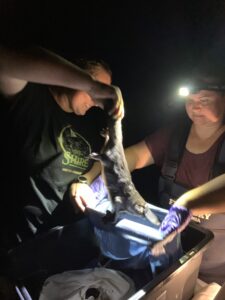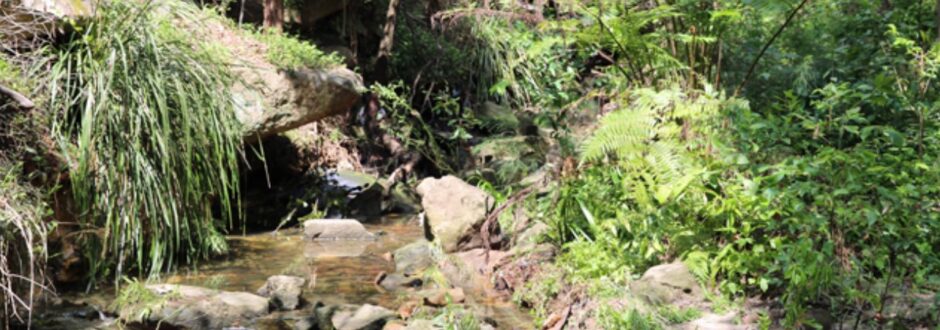On World Water Day last month, members of the Faith Ecology Network joined the first online workshop in the series Ten Ways Faith Groups Care for Biodiversity, writes Sue Martin.
The theme for World Water Day on 22 March was Water for Peace. This was a chance to reflect on the benefits of water management as a conduit for peace, showcasing effective mechanisms and tools to enhance cooperation and prevent water-related disputes.
The Faith Ecology Network (FEN) is an interfaith network of people connecting faith with ecological awareness and care. Since 2020, FEN has had a focus on the Wonder of Biodiversity.
Volunteers from the different faith groups join together to plan events. The network is run by volunteers and has an auspice agreement with the Sisters of Good Samaritan, which supports the mission of strengthening interfaith dialogue between science and religion.
FEN continues to grow as a network, operating mostly with the generous in-kind support of members, and donations from events held.
The aims of FEN are:
- To share mutual appreciation of religious traditions regarding ecological insights;
- To discern and foster religious reasons for environmental advocacy; and
- To strengthen the dialogue of science and religion between different faith groups, professionals and the community.
FEN calls on faith groups to better learn from and care for biodiversity. Things have to change, and it is we who must change.
Our various faith traditions and the sciences have something in common: we listen and learn from each other; we share a sense of wonder and awe.
Writing in his 2015 Encyclical Letter Laudato Si’ Pope Francis said: “The creatures of this world no longer appear to us under merely natural guise, because the risen One is mysteriously holding them to himself and directing them towards fullness as their end. The very flowers of the field and the birds which his human eyes contemplated and admired are now imbued with his radiant presence.” (LS #100)
Using the Green Rule (treat nature as you would like to be treated), FEN has developed the Ten Ways to Care, which are a framework for communities, in particular faith communities, to Listen and Learn, Reflect/Contemplate, and Act.
Our first workshop focused on two of the Ten Ways Faith Groups Care for Biodiversity: Become an Eco Citizen and Be an Active Voice.

The catch and release of Bluey the platypus. Image: Sue Martin.
I shared the story of Bluey, the first captured and released platypus in the Western Sydney University Platypus Monitoring Program. For members of the Cattai Hills Environment Network (CHEN), which I chair, this was a chance to reflect on our call to be integral ecologists and accompany the other in our midst.
In 2016, CHEN identified a need to understand the platypus (Ornithorhynchus anatinus) community living in our urban waterways.
According to the International Union for Conservation of Nature’s Red List of Threatened Species, between 30,000 and 300,000 platypus are thought to have lived in Australia in 2016. The high degree of uncertainty in overall population size is due to several factors.
Platypus live-trapping studies are currently the only reliable technique for estimating how many platypus occur in a given area. The studies are logistically demanding to carry out and can only be safely and effectively conducted in a limited range of platypus habitats.
Platypus population size has, therefore, never been studied in nearly all parts of its range. Fishermen shared videos of the elusive platypus living in our urban waterways, but the scientists did not acknowledge their presence.
Dr Michelle Ryan, a community member of CHEN, found a way for us to become active eco citizens using eDNA sampling across our waterways. Following our first weekend in June 2021, our water samples were interpreted for platypus DNA by the Melbourne Platypus Conservancy laboratories, and we had eight positive sites – a huge celebration!
eDNA can only prove presence, not numbers or health, so the next part of the story was to find a way to learn more about the platypus population in Western Sydney and how eDNA had shown that platypus are living across all our urban waterways in the Hawkesbury-Nepean region.
This was a good news story for us all. We also celebrated the rewilding of platypus into the Royal National Park.
In 2023, our conservation work moved to the next step: the capture and release of platypus to better understand the health and prevalence across our highly urbanised creek systems.
Western Sydney University supported Michelle, and now Katherine Warwick is doing her PhD alongside Michelle, learning about our platypus. In January 2023, I joined Michelle and Kat as we captured Bluey and released him. Showing the video of the release brings much joy every time I share it.
I reflected on how I could better accompany Bluey.
‘Conservation’ status in NSW is protected but not listed as threatened, so development will continue to impact Bluey. Understanding how I am accompanying Bluey is to accept we are all interconnected.
Bluey gives me grace to grow as an integral ecologist, someone who can accompany those on the margins, as we listen to the cry of those made poor and the cry of the earth.
I am still on the journey to be an integral ecologist but through accompanying Bluey, my connection to our local waterways has been amplified. The Ten Ways to Care can be a guide to all faith groups to go out with wonder and awe and care. Together we can be the change we want to see in the world.
To find out more about the Faith Ecology Network (FEN), click here.
